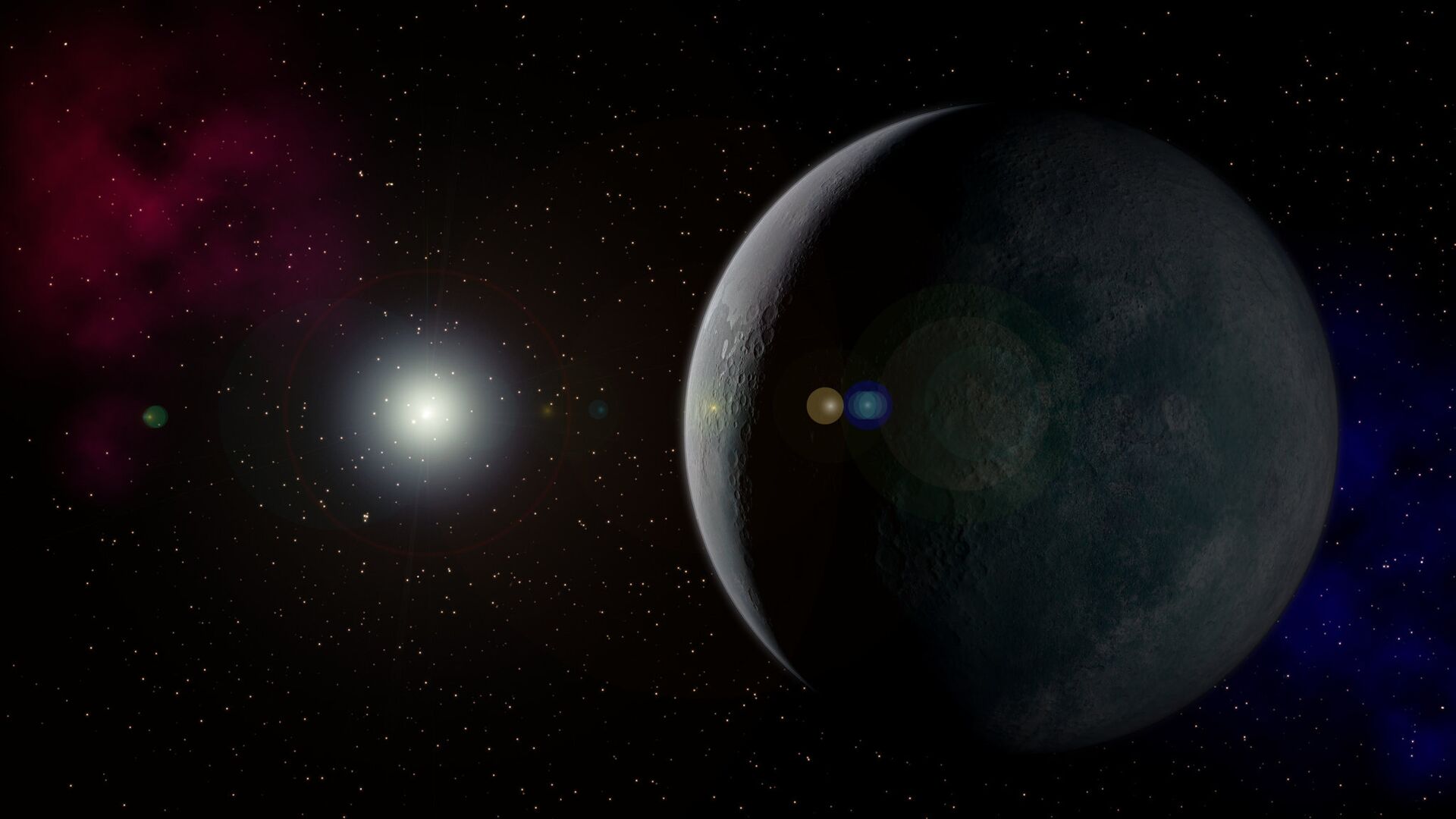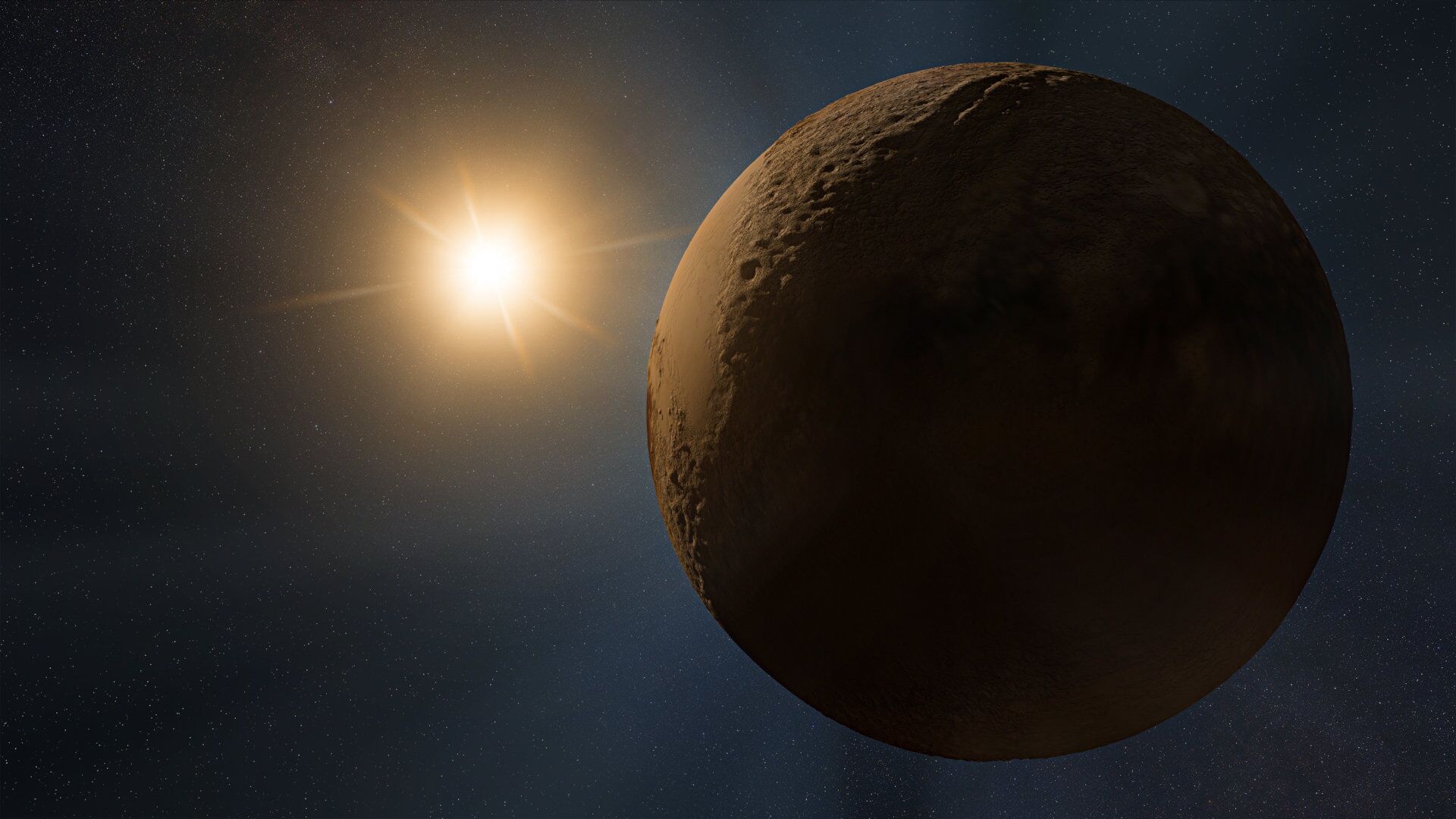https://sputnikglobe.com/20220528/runaway-fugitive-giant-rogue-planet-may-have-migrated-from-our-solar-system-claims-study-1095847916.html
Runaway Fugitive: Giant Rogue Planet May Have ‘Migrated’ From Our Solar System, Claims Study
Runaway Fugitive: Giant Rogue Planet May Have ‘Migrated’ From Our Solar System, Claims Study
Sputnik International
The theory regarding the hypothetical existence of distant Planet Nine or "Planet X" remains contentious: an original prediction based on mathematical... 28.05.2022, Sputnik International
2022-05-28T13:36+0000
2022-05-28T13:36+0000
2022-05-28T13:36+0000
pluto
solar system
kuiper belt
wide field infrared survey telescope (wfirst)
neowise
https://cdn1.img.sputnikglobe.com/img/103346/17/1033461797_0:0:2048:1152_1920x0_80_0_0_fd231fbd76b08a23165bfe993c3035a4.jpg
Recent research has discovered that a gas giant, similar to other planets lurking in the outer solar system, might have been ejected from its orbit around the sun at some point early in the evolution of the solar system.The findings of a team of collaborating scientists from China, France, and the US and published in Nature, may feed into the mounting evidence supporting the theory of Planet Nine - also referred to as Planet X.Planet Nine is a hypothetical planet in the outer regions of the Solar System. Its existence was suggested in January 2015, when Caltech astronomers Konstantin Batygin and Mike Brown revealed new research that provided evidence of a giant planet tracing an orbit far beyond Pluto.Pluto itself ceded its status as "Planet Nine" when it was demoted to dwarf planet status in 2006 by the International Astronomical Union (IAU).The 2015 prediction is based on detailed mathematical modelling and computer simulations, not direct observation. It claimed the gravitational effects of this large object - Planet X - could explain the unique orbits of at least five smaller objects discovered in the distant Kuiper Belt.For their research, ‘Early Solar System instability triggered by dispersal of the gaseous disk’, the international team of scientists ran around 14,000 simulations of the early solar system to figure out how it evolved across about 4.6 billion years from a concentration of interstellar dust and hydrogen gas to look as it does now.The solar system consists of four terrestrial planets, Mercury, Venus, Earth, and Mars, an asteroid belt orbiting near the sun, four gaseous planets, Jupiter, Saturn, Uranus, and Neptune, orbiting further out, and a scattering of cold rocky bodies beyond.These simulations appeared to give the strong suggestion that there was early “instability” in the orbits of the giant gaseous planets, and, possibly, Planet Nine.At some point, the modelling showed, such bodies would have been much closer to the proto-Sun before gas coalesced into the sun, triggering strong fusion reactions. These processes expelled gas and dust along with the planets themselves. According to the scientists, this may have triggered a rapid displacement to their present orbits.According to various media outlets, Professor Seth Jacobson of Michigan State University, who was part of the study, referred to this as "universal source of planetary instability in the galaxy". He added:In 90 percent of simulated scenarios, this instability was triggered.Interestingly, if such an “ejection” were too late, starting within 10 million years of formation rather than 500 million years into the life of the solar system, the object would probably become a so-called “rogue” planet. In this case, the “nursery” solar system can intercept the runaway planet, leaving it stranded in an extended elliptical orbit.Although sky surveys such as NASA's space telescope the Wide-field Infrared Survey Explorer (WISE) and the Panoramic Survey Telescope and Rapid Response System (Pan-STARRS) at Haleakala Observatory in Hawaii, have failed to detect Planet Nine, they have not ruled out the existence of such an object in the outer solar system. Further surveys are continuing using NEOWISE and the 8-metre Subaru Telescope at the Mauna Kea Observatory in Hawaii.
https://sputnikglobe.com/20211117/mysterious-cold-object-in-outer-reaches-of-solar-system-may-be-elusive-planet-nine-claims-study-1090805313.html
pluto
Sputnik International
feedback@sputniknews.com
+74956456601
MIA „Rossiya Segodnya“
2022
News
en_EN
Sputnik International
feedback@sputniknews.com
+74956456601
MIA „Rossiya Segodnya“
Sputnik International
feedback@sputniknews.com
+74956456601
MIA „Rossiya Segodnya“
pluto, solar system, kuiper belt, wide field infrared survey telescope (wfirst), neowise
pluto, solar system, kuiper belt, wide field infrared survey telescope (wfirst), neowise
Runaway Fugitive: Giant Rogue Planet May Have ‘Migrated’ From Our Solar System, Claims Study
The theory regarding the hypothetical existence of distant Planet Nine or "Planet X" remains contentious: an original prediction based on mathematical modelling claims that the elusive object follows an elliptical orbit far beyond Pluto, in the outer regions of our Solar System. There is debate in the scientific community about whether it exists.
Recent research has discovered that a gas giant, similar to other planets lurking in the outer solar system, might have been ejected from its orbit around the sun at some point early in the evolution of the
solar system.
The findings of a team of collaborating scientists from China, France, and the US and published in Nature, may feed into the mounting evidence supporting the theory of Planet Nine - also referred to as
Planet X.
Planet Nine is a hypothetical planet in the outer regions of the Solar System. Its existence was suggested in January 2015, when Caltech astronomers Konstantin Batygin and Mike Brown revealed new research that provided evidence of a giant planet tracing an orbit far beyond Pluto.
Pluto itself ceded its status as "Planet Nine" when it was demoted to dwarf planet status in 2006 by the International Astronomical Union (IAU).
The 2015 prediction is based on detailed mathematical modelling and computer simulations, not direct observation. It claimed the gravitational effects of this large object - Planet X - could explain the unique orbits of at least five smaller objects discovered in the distant Kuiper Belt.
For their
research, ‘Early Solar System instability triggered by dispersal of the gaseous disk’, the international team of scientists ran around 14,000 simulations of the early solar system to figure out how it evolved across about 4.6 billion years from a concentration of interstellar dust and hydrogen gas to look as it does now.
The solar system consists of four terrestrial planets, Mercury, Venus, Earth, and Mars, an asteroid belt orbiting near the sun, four gaseous planets, Jupiter, Saturn, Uranus, and Neptune, orbiting further out, and a scattering of cold rocky bodies beyond.
These simulations appeared to give the strong suggestion that there was early “instability” in the orbits of the giant gaseous planets, and, possibly, Planet Nine.

17 November 2021, 16:08 GMT
At some point, the modelling showed, such bodies would have been much closer to the proto-Sun before gas coalesced into the sun, triggering strong fusion reactions. These processes expelled gas and dust along with the planets themselves. According to the scientists, this may have triggered a rapid displacement to their present orbits.
According to various media outlets, Professor Seth Jacobson of Michigan State University, who was part of the study, referred to this as "universal source of planetary instability in the galaxy". He added:
"What's really cool is that exoplanet astronomers have already confirmed that a very high percentage of both giant gas systems as well as super-Earth systems have gone through planetary system instabilities, and we think the solar system is similar."
In 90 percent of simulated scenarios, this instability was triggered.
"Instability would always occur very early in solar system history a few million years after the start. The Sun would still have been in its stellar cluster at that time. If there were an ejected ice giant, then that ejected ice giant might not have truly been ejected. It might have been caught on this elliptical orbit," explained Jacobson.
Interestingly, if such an “ejection” were too late, starting within 10 million years of formation rather than 500 million years into the life of the solar system, the object would probably become a so-called “rogue” planet. In this case, the “nursery” solar system can intercept the runaway planet, leaving it stranded in an extended elliptical orbit.
Although
sky surveys such as NASA's space telescope the Wide-field Infrared Survey Explorer (WISE) and the Panoramic Survey Telescope and Rapid Response System (Pan-STARRS) at Haleakala Observatory in Hawaii, have failed to detect Planet Nine, they have not ruled out the existence of such an object in the outer solar system. Further surveys are continuing using NEOWISE and the 8-metre Subaru Telescope at the Mauna Kea Observatory in Hawaii.




